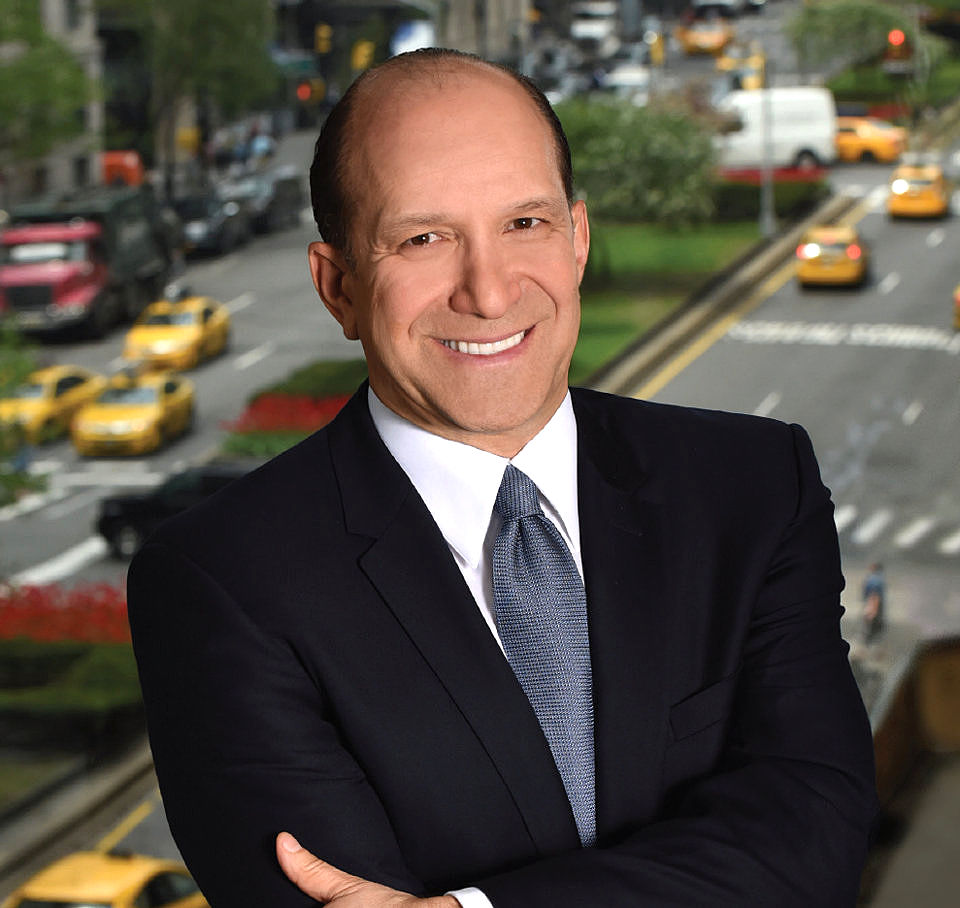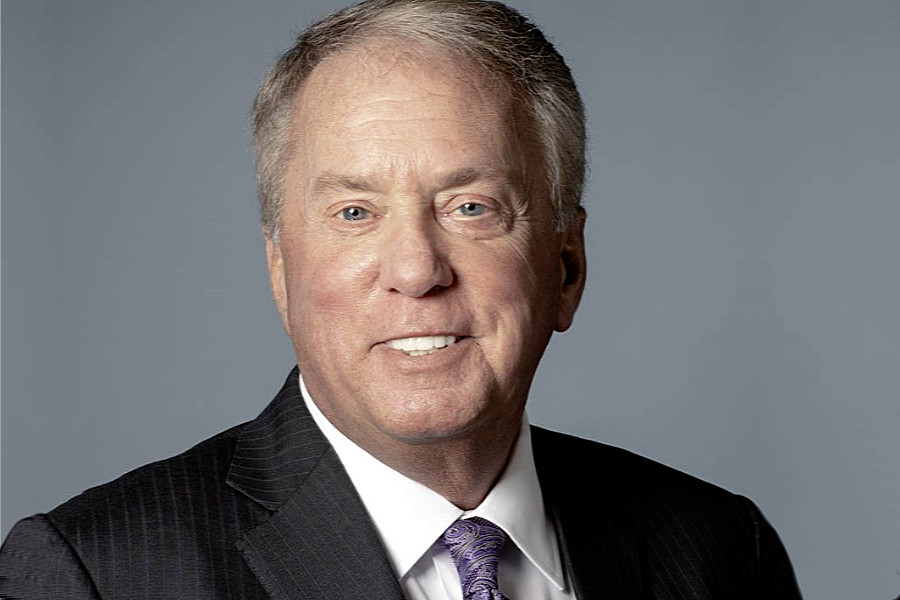The launch of FMX, the derivatives exchange chaired by Howard Lutnick, CEO of interdealer broker and services provider BGC Group, sets out a potentially bad picture for rival CME.

“This will be the proper first time the CME has ever actually had a real competitor who can provide margin offsets and that type of capital efficiency that they have done,” said Lutnick in his firm’s Q4 2023 results call.
BGC Group has named Bank of America, Barclays, Citadel Securities, Citi, Goldman Sachs, JP Morgan, Jump Trading Group, Morgan Stanley, Tower Research Capital, and Wells Fargo as minority equity owners of FMX, which BGC says has a post-money equity valuation of US$667 million. LCH will provide clearing services.
“We have brought together ten of the most important global investment banks and market making firms to create a premier trading venue for the interest rate markets,” said Lutnick, in a statement. “We offered ownership to this incredible investment group knowing the enormous value they bring to FMX, which will benefit all market participants.”
FMX Futures, which received CFTC approval in January, is expected to launch in September 2024. FMX’s cash US Treasury platform, FMX UST (formerly known as Fenics UST), reports it has grown its Central Limit Order Book market share each sequential quarter, while BGC Group reported that FMX UST ended the first quarter 2024 at 28%, up from 26% in the fourth quarter of 2023. FMX combines BGC’s US cash treasuries platform with its spot foreign exchange platform and US interest rate futures exchange, and will use BGC’s low-latency trading infrastructure and distribution to try and expand support for liquidity in the interest rate futures market.
Lutnick recently argued that the CME’s clearing business, presented limited netting efficiencies due to the ‘two-pots’ of collateral being held, which gave the FMX model an advantage. “What the CME does is called two-pot and what we will be doing with the LCH is called one-pot clearing … With two-pot clearing, the CME holds lots of margin and the DTCC holds lots of margin … they give each other a discount because the offsetting position is in [their] friend … Whereas if you held both pots you would literally net them and you would say, okay, if you’re long cash and you’re short futures, I mean, you only have basis risk and that’s 3% risk. It’s not 75% off, it’s 97% off. But you can’t go past 75% off when you don’t hold both pieces of the puzzle.”
However, on the CME’s Q1 earnings call on 24 April, Suzanne Sprague, global head of clearing at CME. And Tim McCourt, global head of equity and FX products at CME Group, set out savings that traders get from using a one-pot clearing system on CME for exchange-traded derivatives versus swaps.
“We do continue seeing increased participation in the cross-margin program between ourselves and the FICC,” said Sprague. “Some of those clearing members are seeing upwards of 75% to 80% in margin savings, and that’s in addition to the portfolio margining program that we offer within CME between our interest rate futures, options and swaps.”
“When we look at the additive value of the CME one-pot portfolio margin, where we have the futures and options against the swaps, that has grown significantly over the years … those margin savings had grown to US$7 billion – US$8 billion last year per day, about US$7 billion per day this year, alongside that our interest rate complex has doubled in volume and open interest, and that is the testament,” McCourt told analysts. “We believe in focusing on unlocking capital efficiencies for our client, enabling them to more efficiently manage their risk, [and] we would expect any further capital savings to have similar effects, but hard to say what that coefficient of growth might be.”

Terrence Duffy, chair of CME Group responded to questions about the threat from CME on Wednesday, telling analysts, “First of all, I have sat here for 22 years as the chairman and CEO of this company since we went public, and I’ve seen nothing but competition my entire career, so this is no different. I take every single bit of competition seriously, as I’m sure others do about CME as we continue to move our business forward. We have about as much information as everybody else does on what their offering is, which is zero. I don’t know what their offering is, and I won’t say the party, but Tim (McCourt) just referenced our one pot margining that saves an additional $7 billion to $8 billion a day.”
An application from the CME to clear US Treasuries itself, announced in March, was also addressed, and analysts asked whether the application complicates things with the DTCC agreement.
“On the participation and the existing programs, we have seen some new clearing members take direct membership to be able to take advantage of that cross-margin programme that is currently in place for house accounts between ourselves and the [DTCC subsidiary] Fixed Income Clearing Corporation (FICC),” said Sprague. “I think it’s hard to quantify how much of that would be new activity versus activity that may have been cleared as clients grew existing clearing numbers prior to that … generally our focus with the DTCC continues to be growing the participation in that programme as well as extending that program to customers.”
“We feel like we’re in a good position,” said Duffy. “We believe that capital efficiencies are the name of the game, and you have to have them. If you want to just do a me-too strategy, then people will do that. It’s a very attractive business – I get it, but again, I think you have to have the capital efficiencies. It’s hard to walk away from US$7 -US$8 billion a day in efficiencies, and it’s hard to walk away from an additional 80% plus that they are receiving associated with FICC now and our new offering, that we just accomplished in the last several months. I think that’s very powerful, and that’s all I’ll say about what they’re doing.”
Analysts have been observing stress-lines in this market for some time. Michael Cyprys of Morgan Stanley wrote in March 2023 “The challenges of evolving market structure were evident in debates around prospects for vertical integration and path to 24/7 markets,”
Reporting on the Futures Industry Association Conference in Boca, Florida, he wrote, “We sensed deep concerns from some market participants (notably CME) about the evolving regulatory backdrop to enable a more vertically integrated stack with the exchange owning both the clearing house and the FCM/broker. While views varied on timeframe and pathway to 24/7 markets, the one thing that was clear to us was that it’s just a matter time of time, and technology advancements can help overcome obstacles. Emerging competitor (FMX) in interest rate futures stoked debate around prospects to gain share from CME, with FMX expected to launch later in 2024.”
The CME has seen declining cash Treasuries volumes in its Brokertec business, which it attributes to liquidity moving into Treasury futures, while rivals including Bloomberg and Tradeweb have seen growth in cash Treasury trading. Support by major banks also underlined the potential threat that CME faces in this space.
“FMX’s unique protocols provide a fresh competitive edge across rates, FX, and futures markets,” said Geoff Weber, head of G10 Rates Flow Trading at Citi. “The impressive growth in market share that FMX has experienced recently enhances market liquidity and positions FMX as a potential catalyst for increased competition, particularly within the futures market. This innovation not only promises to elevate market dynamics but also aims to lower costs for all market participants, signalling a forward-looking shift.”
Kristen Macleod, head of Americas macro distribution and co-head of global FX distribution at Barclays, said, “FMX is going to drive innovation and competition across the rates, FX and futures markets. As a key investor, Barclays looks forward to delivering the benefits of our investment to our clients through improved execution and competitive fees.”
Founded in 1898, and a public company for 22 years, CME earned clearing and transaction fees revenue of US$1.2 billion in Q1 2024 and US$175 million for market data services, out of a total US$1.5 billion revenue for the quarter.
©Markets Media Europe 2024
©Markets Media Europe 2025

























